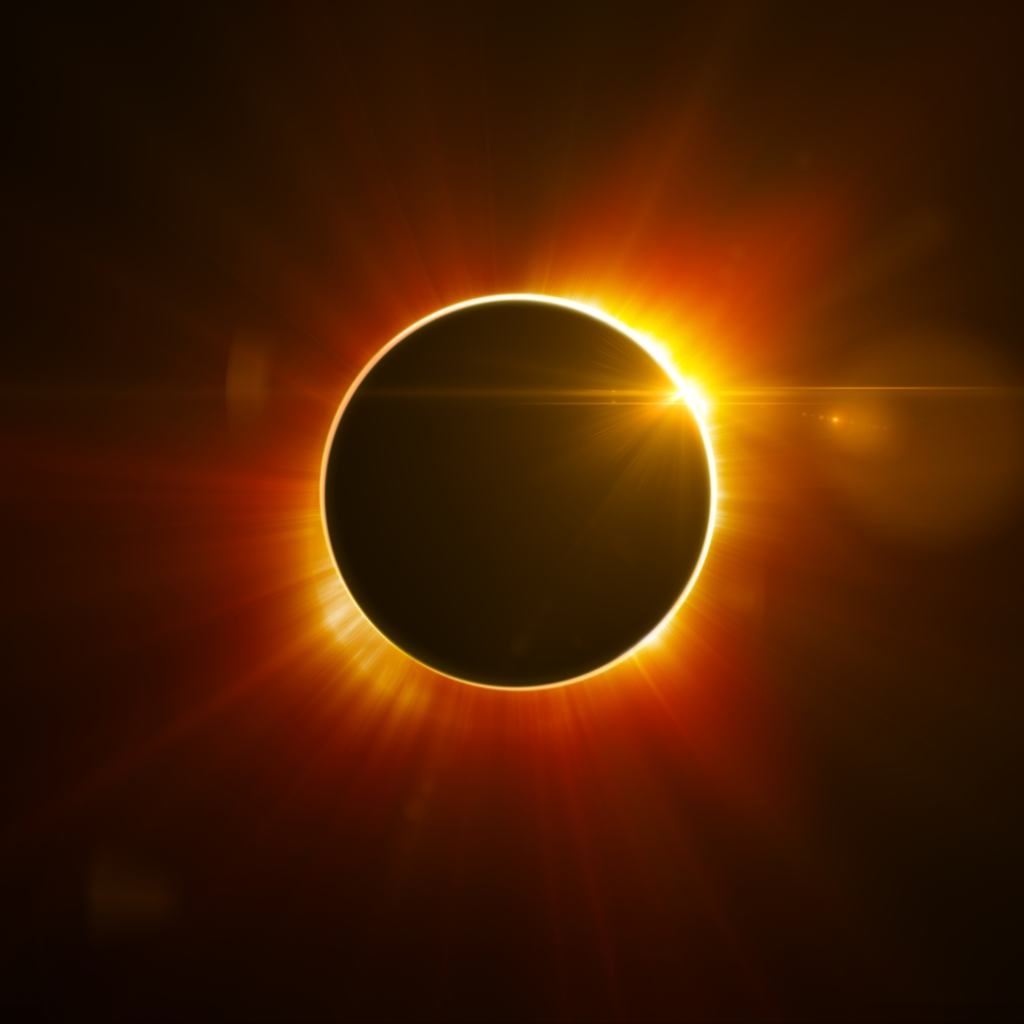
Living on the Pacific coast, I was not fortunate enough to be in the path of the solar eclipse that crossed the United States in April of this year and was unable to travel to the line of totality. Family members in Indiana and Texas lovingly sent me photos and videos that didn’t do the phenomenon justice. So, it got me thinking: when and where is the next total eclipse path?
Table of Contents
What are the different types of solar eclipse?
North America was very fortunate to experience a total eclipse this year. There are actually four different types of solar eclipse that can be visible at different times and places around the world.
- Total solar eclipse – The sun is completely obscured by the moon
- Partial eclipse – The sun is not completely blocked and is partially visible behind the moon
- Annular eclipse – The moon is in front of the sun but not completely obscured, resulting in a ring of fire
- Hybrid eclipse – a combo of a total and annular eclipse, produced when the moon’s shadow moves across Earth

Hybrid eclipses are extremely rare, accounting for only 5% of occurrences. Partial and annular eclipses are relatively common, and you can easily travel to see them on a yearly basis. However, you may have to wait longer to see total eclipses.
What is the difference between a solar eclipse and a lunar eclipse?
During a solar eclipse, the moon crosses between the Earth and the sun, causing part or all of the sun to be blocked from view and the moon’s shadow cast on Earth. During a lunar eclipse, the earth lies between the sun and the moon, causing its shadow to be cast on the moon, making it darker and glow red. Like solar eclipses, lunar eclipses can be total or partial.

Iceland, Portugal, and Spain – August 2026
The next upcoming eclipse will occur on August 12, 2026 over the Arctic, Iceland, Spain, Portugal, and Russia. While seeing an eclipse in Iceland would be absolutely magical, it sounds like this will be the most popular destination for tourists excited to see it. Portugal or Spain may be your best bet, especially if you book your flights and accommodation before the masses realize the path of totality will not be limited to Iceland.
Southern Spain, North Africa, and the Middle East – August 2027
Spain will be blessed with another total eclipse in 2027 with the maximum totality the southern part of the country along with northern African countries such as Morocco and Egypt. How cool would it be to see a total solar eclipse behind Thebes in Luxor, Egypt? Sign me up!
Australia & New Zealand – July 2028
Central Australia and southern New Zealand will get to experience the last total eclipse of the 2020s. On July 22, 2028 Queenstown, New Zealand, and Sydney, Australia are the two largest cities that will be in the path of totality in 2028. However, the best viewing may be in a more rural area of central Australia where the lack of city lights may let you see more stars and planets in the sky.
Where to see Other types of Eclipses
As we saw in 2024, plane tickets and accommodation in areas of the total eclipse pathway will become scarce and very expensive. However, there are areas of the world that see a ring of fire eclipse or partial eclipse that may be easier to snag tickets to. Easter Island, Chile and Santa Cruz, Argentina in South America will have an annular eclipse later this year on October 2nd. The next partial eclipse in March of 2025 will be visible throughout much of Europe as well as the eastern part of North America. Eclipses, whether partial, total, or annular, occur every year, in different areas of the world. In fact, some travelers consider themselves eclipse chasers and attempt to see as many cosmic events as possible!
Ready to see the next solar eclipse?
The next celestial event will be an annular eclipse in Santa Cruz, Argentina and Easter Island, Chile on October 2nd, 2024. At only 5 months away, now may be the best time to book your flight! Remember to purchase eclipse glasses early (and use them!) as they often sell out quickly as well. Many people in North America are currently giving their glasses away. If you have a pair of glasses you no longer need, consider donating them to kids in South America who will need them later this year.








Leave a Reply